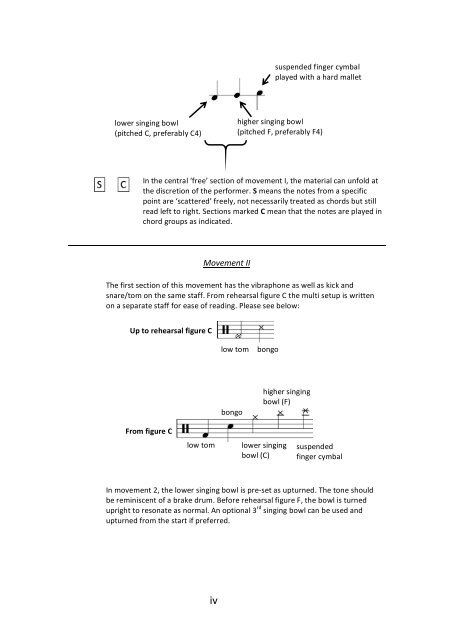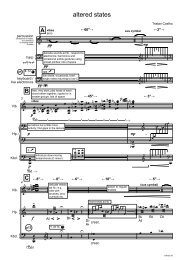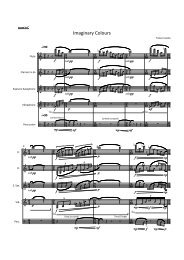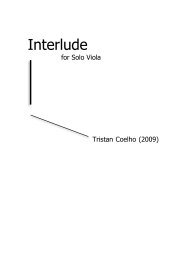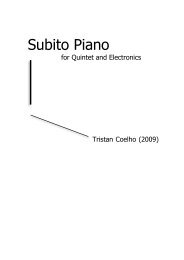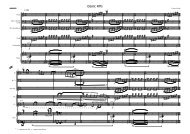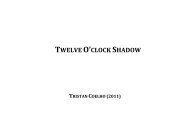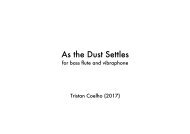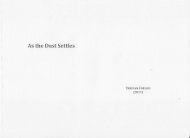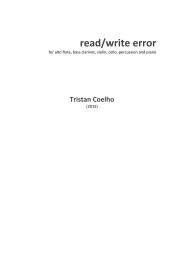a line is a dot that went for a walk
You also want an ePaper? Increase the reach of your titles
YUMPU automatically turns print PDFs into web optimized ePapers that Google loves.
suspended finger cymbal<br />
played with a hard mallet<br />
lower singing bowl<br />
(pitched C, preferably C4)<br />
higher singing bowl<br />
(pitched F, preferably F4)<br />
In the central ‘free’ section of movement I, the material can unfold at<br />
the d<strong>is</strong>cretion of the per<strong>for</strong>mer. S means the notes from a specific<br />
point are ‘scattered’ freely, not necessarily treated as chords but still<br />
read left to right. Sections marked C mean <strong>that</strong> the notes are played in<br />
chord groups as indicated.<br />
Movement II<br />
The first section of th<strong>is</strong> movement has the vibraphone as well as kick and<br />
snare/tom on the same staff. From rehearsal figure C the multi setup <strong>is</strong> written<br />
on a separate staff <strong>for</strong> ease of reading. Please see below:<br />
Up to rehearsal figure C<br />
low tom<br />
bongo<br />
bongo<br />
higher singing<br />
bowl (F)<br />
From figure C<br />
low tom<br />
lower singing<br />
bowl (C)<br />
suspended<br />
finger cymbal<br />
In movement 2, the lower singing bowl <strong>is</strong> pre-set as upturned. The tone should<br />
be remin<strong>is</strong>cent of a brake drum. Be<strong>for</strong>e rehearsal figure F, the bowl <strong>is</strong> turned<br />
upright to resonate as normal. An optional 3 rd singing bowl can be used and<br />
upturned from the start if preferred.<br />
iv


